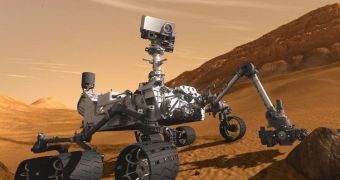For at least a month from now on, the NASA Mars Science Laboratory (MSL) mission will require no course corrections, mission controllers at the agency's Jet Propulsion Laboratory (JPL) announce.
They say that the launch was carried out exquisitely, placing the spacecraft on such a precise course that the first correction maneuver can be postponed by about a month. Usually, course corrections are carried out within the first week after a space probe is launched.
Their role is to ensure that the spacecraft leaving Earth's orbit keeps on heading out into space on the most efficient trajectory. Regardless of how advanced launch technologies have become, it is inevitable for space probes to suffer small deviations.
However, these changes from the optimum course can accumulate and lead to larger errors. This is why mission controllers always correct spacecraft's paths, when such navigation glitches occur. Apparently, this is not the case with the MSL, at least not for the time being.
Original plans called for JPL controllers to issue a total of six course adjustment commands to the MSL spacecraft over the course of its 254-day journey to the Red Planet. The first one was scheduled to occur about 15 days after the spacecraft launch from the Cape Canaveral Air Force Station (CCAFS).
However, the plans did not include the possibility of near-perfect course injection. The Atlas V delivery system that carried the mission to orbit did such a good job that JPL experts now have no reason to conduct a course correction maneuver earlier than late December or early January, 2012.
“This was among the most accurate interplanetary injections ever,” explains JPL MSL mission design and navigation manager, Louis D'Amario. He adds that the MSL is now not heading directly for Mars.
The course of the spacecraft will make it miss the Red Planet by about 56,400 kilometers (35,000 miles). This was done on purpose, because the spacecraft and the Centaurs upper stage from the Atlas V rocket were injected in the same orbit.
Had the space probe been sent directly to Mars, there would have been a distinct possibility of the Centaurus stage hitting the Red Planet. Since the component cannot be properly disinfected ahead of launch, NASA would have risked cross-planetary contamination.
The purpose of the course correction maneuvers is to place the MSL on the correct path to Mars, while allowing the Centaurus stage to miss Mars by a wide margin. The spacecraft will reach Gale Crater, on the surface of Mars, on August 6, 2012 (UTC).

 14 DAY TRIAL //
14 DAY TRIAL //